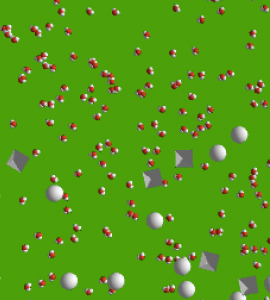
Original author
Resource type
Content area
Use type
Tools
This lesson was developed around two alternative models available in the GUTS gallery for alternatives to the CS in Science Module 4 (Chemistry). I felt that the model in the chemistry module involved chemical processes that were above the introductory level of my middle school students.
In this lesson students will participate in two activities. The first activity is a lab dissolving a solid salt followed by decoding a CS model showing that process. Students will discuss the computer model of dissolving, relate it to their observations in the lab and then make modifications to the model in order to make the computational model be more scientifically accurate.
The second activity involves decoding a second CS model that adds evaporation to the model and again comparing that to their real world experience with the lab activity. Students will consider how they might improve the model or potentially add different sliders to change the concentration of salt in the solution, how temperature impacts molecular motion and evaporation or other ideas to use this model as a simple test bed. Of particular interest is the juxtaposition of real and virtual worlds and consideration of how a computer model might help us understand a phenomenon in the real-world. Students will be exposed to characteristics of complex adaptive systems: simple rules, emergent patterns, and resilience. In these activities, students will be led “under the hood” and get an overview of some of the parts of a computer model while comparing a model to the real world and understanding how models are used to explain phenomenon in science.
Log in or register to view attachments and related links, and/or join the discussion
